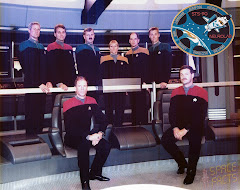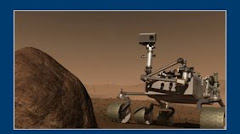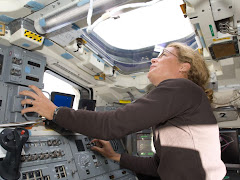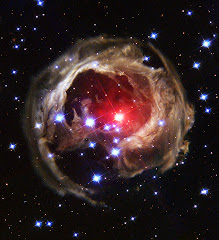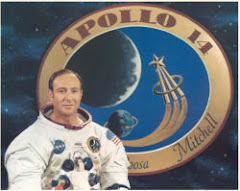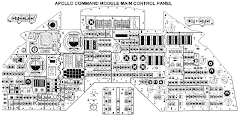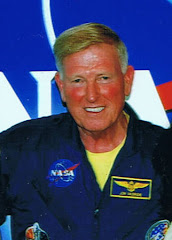Wednesday, September 16, 2009
TIME LAPSE VIDEO OF NASA ARES I-X ROCKET BUILDUP
Five minutes and forty five seconds - Enjoy!
Thursday, July 30, 2009
NASA's spinoffs
“Spinoff is NASA's annual premier publication featuring successfully commercialized NASA technology. For more than 40 years, the NASA Innovative Partnerships Program has facilitated the transfer of NASA technology to the private sector, benefiting global competition and the economy. The resulting commercialization has contributed to the development of commercial products and services in the fields of health and medicine, industry, consumer goods, transportation, public safety, computer technology, and environmental resources.”
- NASA Spinoffs
Exploration& Innovation Lead to new Discoveries
http://tinyurl.com/bokacvTrace space back to you! At home and your city
http://tinyurl.com/cxvlwu
Wednesday, July 22, 2009
Saturn's moon shows evidence of ammonia
ESA http://tinyurl.com/mvlb5v
NASA http://tinyurl.com/268pg
Italian Space Agency http://tinyurl.com/nngsdz
22 July 2009
Friday, July 17, 2009
For Neil Armstrong, the First Moon Walker, It Was All about Landing the Eagle
Neil Armstrong's words to me, in a 1988 interview, came as a real surprise. Like most people, I think, I had expected that for Armstrong, the moment when he took humanity's first step onto another world would have been the ultimate high point of his Apollo 11 mission. As one of the 600 million people who witnessed history's first moon walk on live TV and radio, I remembered my own sense of awe seeing Armstrong's "one giant leap for mankind."
Of all the challenges Armstrong and his crew faced on Apollo 11, the landing itself was far and away the most difficult. Even if there were no malfunctions or other technical problems—an unlikely scenario—the descent would test the abilities of the entire Apollo team, Mission Control, as much as the astronauts themselves. In just 12 minutes, Armstrong and co-pilot Buzz Aldrin had to bring their lunar module Eagle from a height of 50,000 feet, orbiting at a speed of several thousand miles per hour, down to the surface in what amounted to a controlled fall. With no atmosphere, neither wings nor parachutes would have been useful; the only means of controlling the descent was by varying the thrust of Eagle's descent rocket. Adjusting the lander's flight path was especially tricky; with the craft balanced on rocket thrust, changing direction required tilting the entire spacecraft slightly to one side. And as Armstrong and Aldrin were all too aware, there was only enough fuel for one landing attempt.
And they almost didn't pull it off. The problems began soon after Armstrong and Aldrin began their descent on July 20, 1969. First it was trouble with communications with Earth. Then, alarm tones in the astronauts' headphones signaled something even more serious: the onboard computer, which was controlling the craft's speed and orientation, was becoming overloaded with tasks. . .
By Andrew Chaikin 7-17-09 Scientific American
http://tinyurl.com/lm97ew
Thursday, July 16, 2009
STATUS REPORT : STS-127-02
The song “These Are Days” by the band 10,000 Maniacs emanated from speakers inside Endeavour’s crew cabin, a wake-up call targeted especially for Mission Specialist Tim Kopra.
Commander Mark Polansky and Pilot Doug Hurley will start their day with an Orbital Maneuvering System engine firing to refine Endeavour’s path toward the station. A second burn is planned at the end of the crew’s day. In addition, the crew will set up a camera in the shuttle’s docking tunnel, extend the Orbiter Docking System ring and check out the hand-held laser range-finder and other equipment that will be used to provide precise distance and approach information for the upcoming docking.
Mission Specialists Chris Cassidy, Tom Marshburn, Dave Wolf, Kopra and Julie Payette of the Canadian Space Agency will focus on inspections of Endeavour’s heat shield using the shuttle’s robotic arm and the Orbiter Boom Sensor System.
Spacewalkers Wolf, Cassidy, Marshburn and Kopra also will begin checking out the space suits they will wear and the tools they will use on the mission’s five spacewalks.
Aboard the station, Expedition 20 Commander Gennady Padalka and Flight Engineers Michael Barratt, Koichi Wakata of the Japan Aerospace Exploration Agency, Roman Romanenko, Robert Thirsk of the Canadian Space Agency and Frank De Winne of the European Space Agency, will spend the day packing and preparing for the arrival of visitors. They’ll review photography procedures for documenting the condition of the shuttle’s heat protection tiles as it completes a rendezvous pitch maneuver during its approach to the station.
Endeavour’s crew will go to bed just after 10 p.m.
The next shuttle status report will be issued at the end of the crew’s workday, or earlier if events warrant.
To access these reports go to - http://tinyurl.com/bzxan
Tuesday, July 14, 2009
How Earth Got its Oxygen
Most scientists believe the amount of atmospheric oxygen was insignificant up until about 2.4 billion years ago when the Great Oxidation Event (GOE) occurred. This seemingly sudden jump in oxygen levels was almost certainly due to cyanobacteria – photosynthesizing microbes that exhale oxygen. When and how the oxygen-exhalers appeared is uncertain, due to the fact that the GOE was a complicated crossroads of global freezing, mineral upheavals and the flourishing of new species.
To help sort out the geologic plotline, Papineau is studying banded iron formations (BIFs), sedimentary rocks that formed at the bottom of ancient seas.
Papineau's research, which is supported by the NASA Exobiology and Evolutionary Biology Program, is focusing on specific minerals in the BIFs that may be tied to the life (and death) of ancient microbes.
To verify this, Papineau's team will be studying the BIF carbon and comparing it to other carbonaceous-mineral associations known to be of non-biological origin, including minerals found in a Martian meteorite.Kappler believes that studying the origin of the oldest BIFs could tell us when life evolved the ability to breathe out oxygen and thereby change the world forever.
By Michael Schirber, Astrobiology Magazine
www.livescience.com
Wednesday, July 8, 2009
NASA Tests Internet in Space
The many paths a message can take through the Internet make that network robust and efficient -- and the envy of those whose job it is to design communications schemes for the far-flung spacecraft leaving Earth each year.
After more than a decade of development, NASA is in a rush to have a communications network ready by 2011 that can efficiently carry data between Earth and the multiple probes, rovers, orbiters and spacecraft exploring the solar system -- effectively binding them together to form an interplanetary Internet.
Tests performed on the International Space Station last May were the second of three tryouts of the network's key technologies, called Delay Tolerant Networking, or DTN, protocols.
The constant motion of celestial bodies means that packets have to pause and wait for antennas to align as they hop from planet to probe to spacecraft.
- - - DiscoveryNews - - - Elise Ackerman, IEEE Spectrum
http://dsc.discovery.com/news/2009/07/07/nasa-internet-space.html




